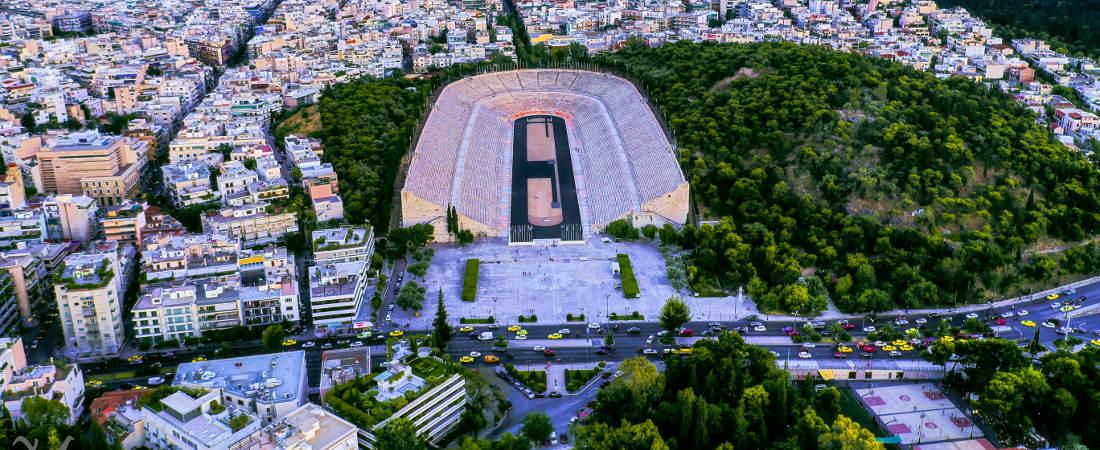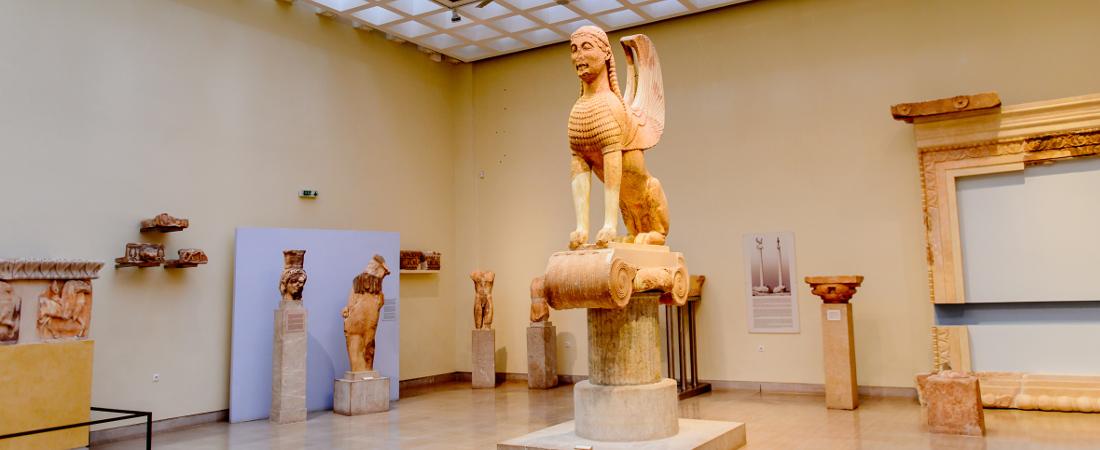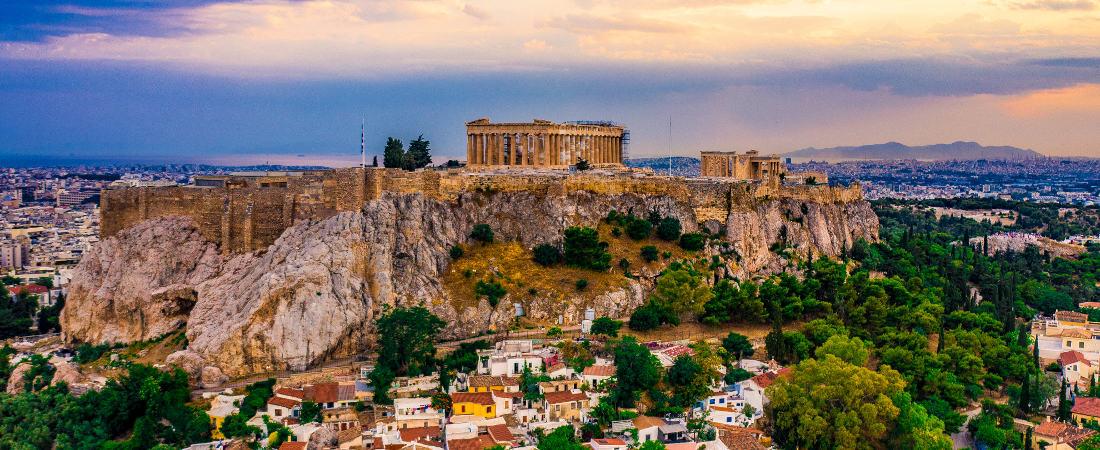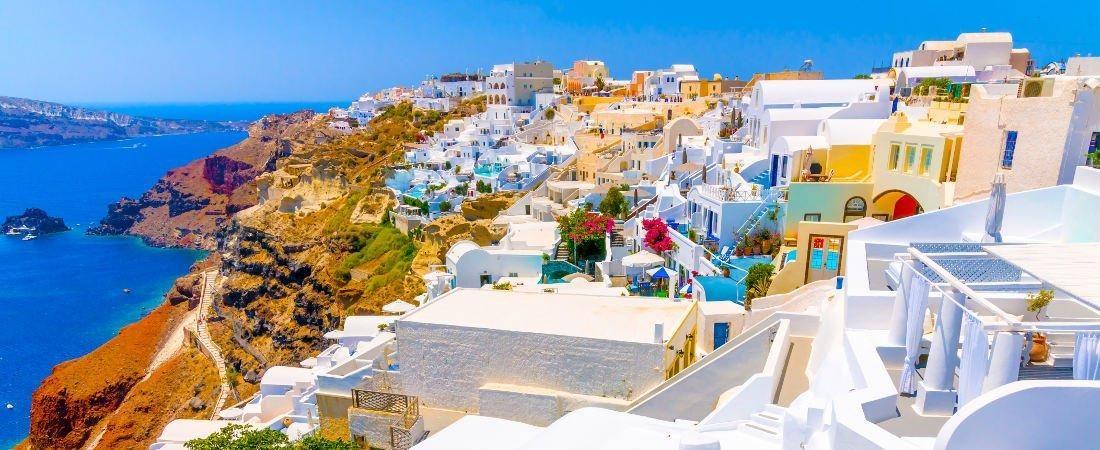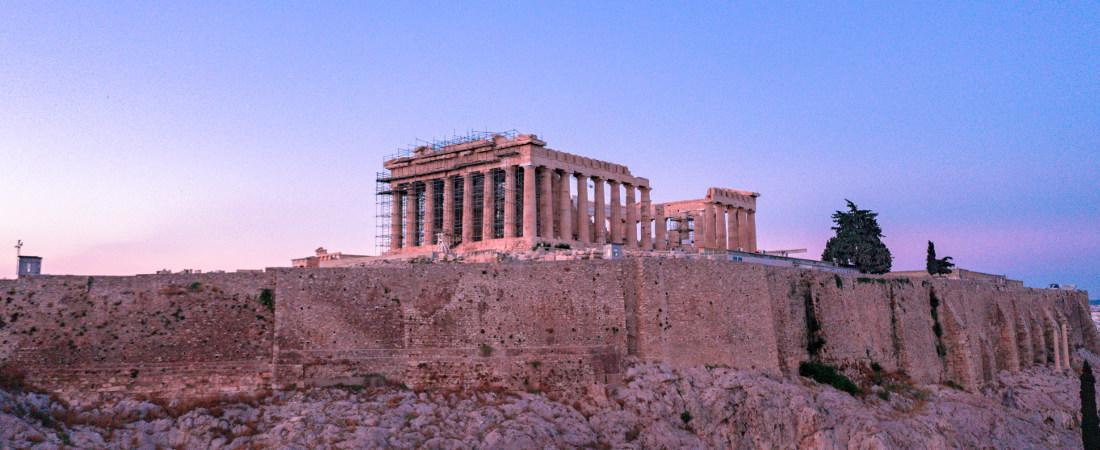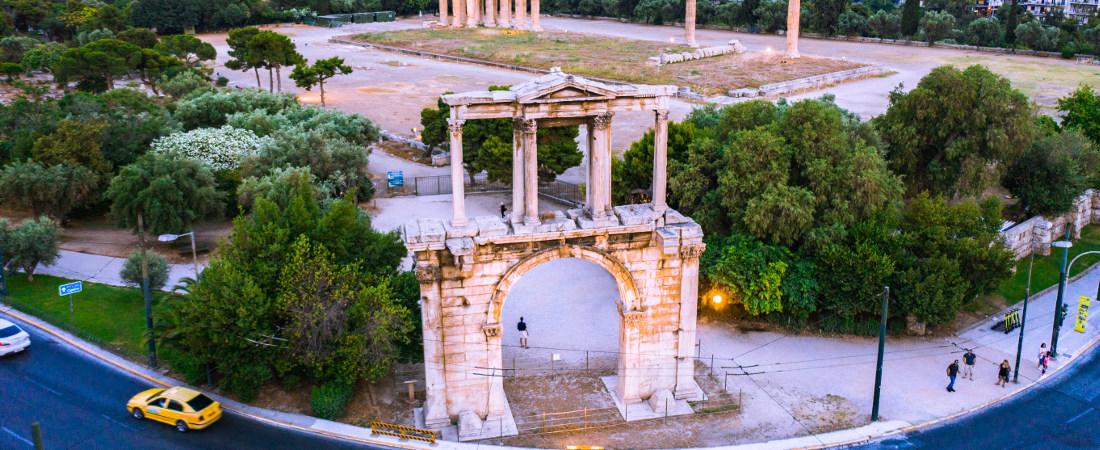The Acropolis of Athens
The Acropolis of Athens was formally proclaimed as the pre-eminent monument on the European Cultural Heritage list of monuments on March 26, 2007. The word “Acropolis” means city on top of a hill, and there are many Acropolises all over Greece.
They were always situated on a high spot and were often used as a place for shelter and defense against various enemies.
The one in Athens City is the most famous of them all, and is therefore referred to as “The Acropolis”.
Towering over the Capital of Greece, it is a very impressive sight, and walking around its grounds gives the visitor a feeling of awe and a true sense of the Greatness of The Ancient Greeks.
The monuments of The Acropolis of Athens stand in harmony with their natural setting.
These unique Masterpieces of Ancient Architecture combine different orders and styles of Classical Art most innovatively. Art and culture for many centuries were influenced by those styles.
The Acropolis of Athens of the 5th century BC is the most accurate reflection of the splendor, power, and wealth of Athens City at its greatest peak, The Golden Age of Pericles.
Athenian Origins
The founder of Athens City and Greek Civilization was King Kecrops, according to mythology.
He was born out of the earth and was half man, half snake.
He taught people many crafts, as well as the burial customs, and decided which God would protect the Athens City.
There were two candidates, Goddess Athena and God Poseidon.
To prove their worth, and perhaps bribe the people, they each presented Athens City with a gift.
God Poseidon struck his Trident into the Rock of the Acropolis of Athens, and out sprang a well.
The people ran to the well to drink its water. Because Poseidon was God of The Sea, the water was salted, so they had to spit it out.
Then Goddess Athena touched the ground, and an Olive Tree grew out.
This proved to be a much more useful present, so Kecrops decided that Goddess Athena would be The Patron of Athens City – thus giving it her name as well.
The wooden statue of Goddess Athena, which originally stood on The Acropolis of Athens, was believed to have fallen out of the sky.
The Acropolis of Athens has been inhabited since at least the 7th Millennium BC.
During the Mycenaean Civilization walls were built around it and there is evidence that there was a Mycenaean Palace here as well.
The Tomb of Kecrops also lies here, and the Athenians might have kept a snake here – symbolizing their first King.
There were also other Tombs and Temples here, all connected to Kings, heroes, and gods that had to do with Athens City.
In the 6th century BC, The Acropolis of Athens had changed quite significantly.
It was no longer a place for Palaces but had turned more into a Sanctuary than anything else.
Customers Also Bought This
Athens Morning Sightseeing Tour With Visit The Acropolis of Athens and New Acropolis Museum
From:Every year a huge Procession to The Acropolis of Athens took place, and the wooden statue of Goddess Athena was dressed and given sacrifices.
The Panathenean Games were also very important. The games included both athletic and musical competitions. Furthermore, the winner received an amphora filled with olive oil. This was because the olive tree was the Sacred Tree of Goddess Athena.
Afterward, during the Persian wars in the 5th century, the Athenians started building The Parthenon, but the Persians burnt The Acropolis of Athens and all focus turned on the battles.
It was during Pericles Era, the so-called Golden Age, when The Acropolis of Athens got the structure we see today.
Starting in the middle of the 5th century, The Parthenon, The Propylaea, and a huge bronze Statue of Goddess Athena were made.
It is said that Pericles used unemployed Athenians for workers and that it was thanks to this initiative, every Athenian had food on their table.
The Parthenon was made by the architects Ictinus and Callicrates, and the statue of Goddess Athena by Phidias.
Towards the end of the 5th century, The Erechtheum was built, as well as The Temple of Athena Nike.
Post Roman conquest
When the Romans conquered Greece in the 2nd century BC, they looted most of the sanctuaries.
Statues and other works of art were taken back to Rome from Olympia and Delphi, for example, but The Acropolis of Athens was pretty much left alone.
Some of the emperors did make a few additions, though.
In the 2nd century AD, Herodes Atticus had his Great Theater built, and to this day, Athenians are enjoying concerts and ballets here.
During the Middle Ages, several of the Temples on The Acropolis of Athens were converted into Christian Churches.
Quite characteristic is the fact that The Parthenon, which had been a Temple to the Virgin Goddess Athena, now became a Church to the Virgin Saint Mary.
When the Turks came towards the end of the 16th century, they turned The Parthenon into a mosque.
Until the 17th century, the temple was relatively unharmed, but in 1687 the Venetians bombarded The Acropolis of Athens, and a canon ball hit The Parthenon, which the Turks used as a storage room for gunpowder.
The temple exploded and this is why the temple does not have a roof today.
At the beginning of the 19th century, the sultan permitted the Englishman Lord Elgin to take with him “souvenirs” from the Acropolis of Athens.
Unfortunately, it was then that he took The Famous Parthenon Marbles. Until today, it is a matter of controversy since they are housed in The British Museum despite the Greek’s plea to get them back.
Despite all that The Acropolis of Athens has been through, it is the pollution in modern Athens City that is its worst enemy.
Everyone is aware of the situation for many decades now, but still, no one is actively doing something about it.
See the Acropolis of Athens with one of our tours:
-
Athens Morning Sightseeing Tour With Visit The Acropolis of Athens and New Acropolis Museum
-
1 Day Athens City Tour Visit of Acropolis, New Museum and Temple of Poseidon at Cape Sounion
-
Athens Afternoon Sightseeing Tour With Visit Of Acropolis and Parthenon
-
7 Day Combined Tour Package to Athens City and Mykonos Island
-
7 Day Combined Tour Package to Athens City and Santorini Island
-
9 Day Combined Package Mykonos and Santorini Islands with Stop-Over in Athens
-
8 Day Combined Tour Package to the Islands and Historical Sites of Greece
Recent Reviews
Submit your reviewhopin.grAverage rating: 0 reviews





